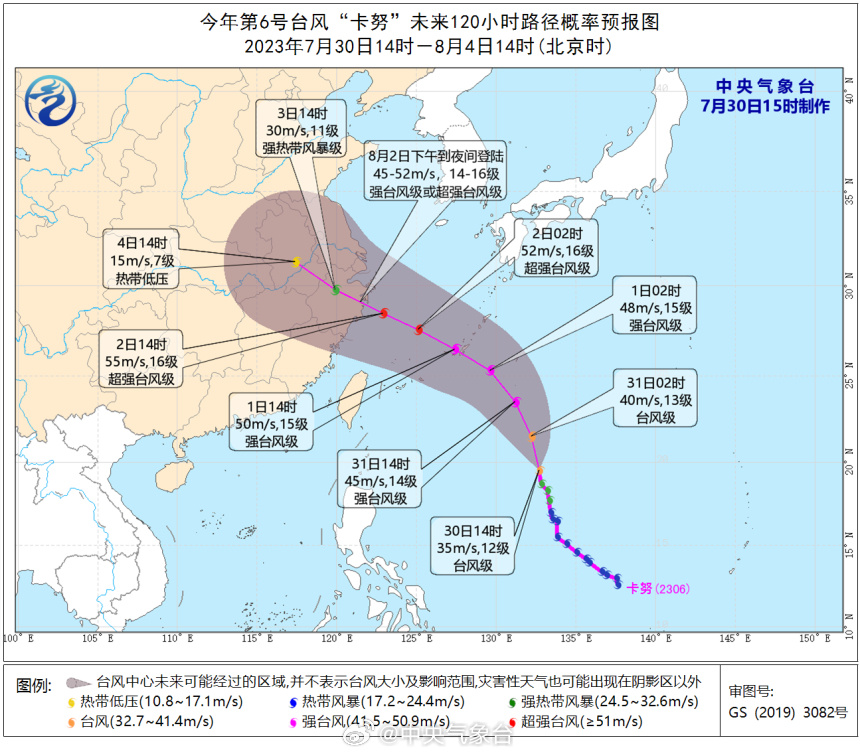
This year’s No.6 typhoon "Kanu" is approaching the east China coast.
"This is ‘ Kanu ’ This typhoon name was used for the fourth time. " Experts from Zhejiang Meteorological Department told The Paper on July 31st that the Typhoon Committee of the World Meteorological Organization (WMO) decided to adopt a unified naming system for tropical cyclones (typhoons) in the northwest Pacific Ocean and the South China Sea from 2000, and 10 names were put forward by 14 countries and regions concerned, including Chinese mainland, Cambodia and Japan, with a total of 140 names for recycling.
According to reports, there are corresponding specifications for typhoon naming, such as pinyin is no more than 9 letters, Chinese names are composed of 2-3 Chinese characters, names should be easy to spread by the media, without inappropriate meanings, and commercial brands cannot be used. The 10 typhoon names provided by Chinese mainland include anemone, ginkgo, Fengshen, cuckoo, Mulan, Wukong and so on.
"Kanu" is a typhoon name provided by Thailand, which means jackfruit. It has been used three times. In 2005, the 15th typhoon "Kanu" attacked Zhejiang directly and landed on Luqiao on September 11th, causing serious disasters. The No.7 tropical storm "Kanu" in 2012 landed on the southern coast of Jeju Island in South Korea on July 18th. In 2017, the No.20 strong typhoon "Kanu" landed on Luzon Island in the Philippines in mid-October, moved into the South China Sea, and landed in Xuwen, Guangdong with a strong tropical storm.
"There are always 140 names on the naming list, but there are updates — — If the typhoon causes particularly serious disasters or casualties, the name will be changed, such as super typhoon ‘ Sang Mei ’ ‘ Mangosteen ’ Wait, a new name will be submitted by the country or region that provided the name. " Meteorologists told The Paper that there are generally twenty or thirty typhoons a year, and 140 names are recycled once every five or six years. This year, the name of Typhoon No.5 "Du Surui" has been used for the third time, which is provided by South Korea and refers to a bird of prey.
"Kanu" was formed in the east of the Philippines and strengthened to typhoon level on the 30th. At 17: 00 on the 30th, its center is located on the ocean surface about 850km southeast of Naha, Ryukyu Islands. It is expected to move to the north-west at a speed of 20km per hour, and then move to the northwest on the 31st, with the intensity gradually increasing, and the strongest typhoon can reach strong typhoon level or super typhoon level (50-55m/s, 15-16). On August 1st, it will move into the East China Sea and approach the east China coast.